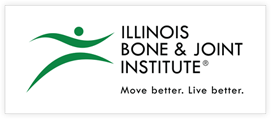Considering Knee Arthroscopy? What You Need to Know
Knee arthroscopy is a very common procedure used in the diagnosis and treatment of a wide range of knee conditions. The procedure can be performed in the outpatient setting and is usually completed within 30-60 minutes. You may even be allowed to return home a 1-2 hours after the procedure.
The prospect of having a nagging knee problem treated via knee arthroscopy rather than open knee surgery is quite appealing; however, the procedure is not for everyone. Good candidates are usually healthy and active individuals under the age of 60. Also, those with end-stage arthritis may not benefit from knee arthroscopy.
During the knee arthroscopy, 2-3 small poke-hole incisions are made around the knee. The arthroscopic instruments including a tiny camera are inserted through these incisions to perform the surgery which can include repair of torn structures, smoothening of jagged edges of bone, and removal of loose bodies from within the knee joint.
When you come out of surgery, you will have a bandage on the knee which will be covered with an Ace wrap and sometimes a full brace on the knee if you have had a reconstructive procedure. The removal of the dressing will usually be handled in the office on subsequent days or at your first postoperative visit. Over-the-counter anti-inflammatory medication (NSAIDs) and pain pills (Acetaminophen) may be used sparingly as recommended by your doctor.
After the surgery, you may need crutches for a few days, but then typically wean off of them depending on how extensive your knee arthroscopic surgery is. You will be encouraged to bear weight on the knee as soon as possible in order to activate the quadriceps muscle and get the muscle tone back quickly. You may have to undergo physical therapy on the same day or the next in order to start the process of rehabilitation. Physical therapy exercises and ice therapy can help reduce swelling in the knee. Knee discomfort and pain levels will reduce as your swelling reduces. Your knee range of motion will also increase with reduced swelling and you will be able to better activate your quadriceps muscles.
As you knee becomes stronger, you can start weight bearing as tolerated and gradually return to routine activities. When you can start driving will depend on your muscle control and if you have weaned off any narcotic medication prescribed to you. Generally, you may be able to drive within 2 weeks to 2 months depending on your recovery. Return to work will depend on the nature of your job. This can vary between 2 weeks for a sedentary desk job to about 6 weeks for jobs that require lot of walking or manual labor.
Consult Dr. Ronak Patel to find out if you might be a candidate for knee arthroscopy.
Dr. Ronak Patel is a Board-Certified Orthopedic Surgeon offering a full range of care for all problems of the knee and shoulder with a special interest in complex knee disorders. He treats all sports injuries with a particular interest in anatomic ACL reconstruction, cartilage restoration, and patellar stabilization of the knee enabling optimal performance and allowing athletes to return to their preinjury activity and sports. Book your appointment with Dr. Patel today: (630) 929-2249.
At a Glance
Ronak M. Patel M.D.
- Double Board-Certified, Fellowship-Trained Orthopaedic Surgeon
- Past Team Physician to the Cavaliers (NBA), Browns (NFL) and Guardians (MLB)
- Published over 49 publications and 10 book chapters
- Learn more

